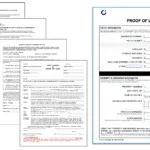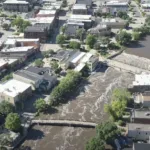It can be confusing to file a property or homeowner’s insurance claim in Texas. Policies are complex, there are all kinds of exclusions, limits, and requirements, and there are deadlines that you need to keep track of. Texas insurance claims can be especially complicated because of the numerous causes of loss that can occur – Texas properties can get damage from pretty much every category: hail, fire, flood, wind, hurricane, freeze, and more.
Luckily, however, Texas law has requirements for insurance companies to ensure that property insurance claims can be handled smoothly, quickly, and efficiently in order to get you paid what you need to be made whole again. These resources are specifically built to help policy holders, as well as the stakeholders that they work with. Below, you can find information that you can use to help make sure your claim is made properly and on time, and learn how and when to escalate your claim and get paid.
Filing Deadline
Promptly – Set by Insurance Policy
In Texas, the deadline to make a property insurance claim is set by the language of the insurance policy itself. This generally means that a policy holder should inform their insurance of the loss as reasonable after a loss occurs.
Initial Response Time
15 days
Texas has a strict deadline for an insurance carrier to acknowledge a claim and begin to work on it – 15 days from their receipt of the First Notice of Loss. Note, however, that this deadline can be extended to 30 days from notice of loss for a surplus lines carrier, and extended to 60 days for policies under the Texas Windstorm Insurance Association (TWIA).
Claim Decision Time
15-60 Days – (Payment w/in 5 days after written acceptance)
This deadline is a little tricky in Texas because there are two parts to this deadline: First is the deadline for accepting or rejecting the claim. This must occur within 15 days from when the insurance company received all required documentation (note this deadline can be extended an additional 45 days if written notice is provided). Second is the deadline for payment. Payment must be made within 5 days of acceptance (in whole or part) of the claim. Note: surplus lines carriers have 20 days from acceptance in which to pay, and TWIA carriers have 10.
Lawsuit Deadline
2 Years
While the general deadline for a breach of contract action in Texas is 4 years, insurance contracts are allowed to shorten this period to 2 years (which nearly all of them do). This time generally starts running from when the insurance company makes a claim determination.
State Department
File your Claim Now with ClaimSpot
ClaimSpot guides you through a quick, secure, and effortless filing experience.
It’s free. Let ClaimSpot Make Your Claim Fast & Easy.
Texas Insurance Claim Guide
Texas Insurance Frequently Asked Questions
These resources are specifically built to help policy holders, as well as the stakeholders that they work with. Below, you can find information that you can use to help make sure your claim is handled correctly from beginning to end, and learn the deadlines that you and your insurance company need to follow in order to ensure that your claim is processed smoothly, quickly, and efficiently. And, if necessary, how and when to escalate your claim and get paid.
In Texas, making a claim under your property insurance policy can be started just by informing your insurance company that your covered property has sustained damage, or has been destroyed. This original communication that damage has occurred is called a “First Notice of Loss.”
Usually, there are a few ways by which you can inform your insurance company of the loss, including:
a. Phone call (a number is usually provided on the insurance company’s website);
b. Online portal – many insurance companies have an online form to notify the claims department of a loss, this may even be through a mobile app;
c. Your agent – many insurance companies even have a different section of their website or phone number for an agent to inform them of a policy-holder’s loss;
d. Online software as a virtual assistant.
A First Notice of Loss (or “FNOL”) is very simple – just inform the insurance carrier that there was damage to a covered property. However, providing your insurance company with more information in your initial communication, and quickly providing follow-up and supporting information (including a Proof of Loss document) the quicker your claim can be processed and paid. If circumstances make it difficult to provide more detailed information for some time, that’s ok as long as the insurance company was notified that there was damage incurred. What is most important is to always try to provide accurate information, and to communicate with your insurance company clearly.
1. As soon as possible begin to mitigate the damage – protect the property and secure it against further damage as soon as it is safe and possible to do so. Note, however, that this mitigation should only be just that, trying to keep the damage from getting worse, this does not mean to jump directly into substantive repairs.
2. Cooperate with your insurance company and communicate with them (and keep copies of all correspondence).
3. Make your property available for inspection as soon as it is safe and possible to do so.
4. Prepare supporting documents for your claim including:
– Inventory list;
– Description of damages;
– Photographs and/or videos of the damage;
– Receipts; etc.
Reporting Deadline: In Texas, the deadline to make a property insurance claim is set by the language of the insurance policy itself. Generally, it is best practice to report a property damage claim as soon as you believe a covered loss has occurred, within reason. It is important, however, to check your insurance policy for any specific deadlines to make your claim, since the policy generally sets the rules. Be sure to initiate your claim promptly to avoid missing out on coverage. Some Texas insurance policies have a 1-year time limit to make a claim, but the time period can be much shorter for other policies, so it is prudent not to rely on that 1-year time period.
Documentation Deadline: Your policy or insurance company may also notify you of a specific deadline for submitting documentation and evidence to support your claim. Providing supporting documentation as soon as you can reasonably produce it (while maintaining your position that it is only based on what is known at the time it is produced and could be subject to amendment) helps get your claim moving. In Texas, as seen below, there are quick deadlines for the insurance company with respect to your claim – and payment can be based on when they receive all the required supporting documentation from you.
Deadlines for Acknowledgment & Adjustment: Texas has strict timing requirements that insurance companies must adhere to with respect to property insurance claims. And, luckily for Texas policy holders, these timelines are relatively short and designed to keep your claim moving.
Generally, a Texas insurance carrier must a) acknowledge receipt of your claim; b) begin investigation of your claim; and c) request all documents it reasonably believes might be required from you, within 15 days of you providing them with the First Notice of Loss (reporting your claim). However, this deadline is extended to 30 days from notice of loss for a surplus lines carrier, and extended to 60 days for policies under the Texas Windstorm Insurance Association (TWIA).
Deadline for Acceptance/Rejection: In Texas, insurance companies are required to provide you a written notice accepting or rejecting your claim within 15 days from the date on which you provided the company all of the documents it requested from you. This is where prompt compliance, with request, or even preemptive compliance by providing proof, supporting documents, a sworn proof of loss, etc. prior to or immediately commensurate with their request can help to speed along your claim. Note, however, that the insurance company can extend this deadline by providing you written notice (within the original 15-day period) that additional time is required to investigate the claim, and why. If this notice is provided, the deadline is extended an additional 45 days from when that notice is sent.
Deadline for Payment: If your claim is accepted (or partially accepted), Texas insurers are required to pay the undisputed portion of your property insurance claim within 5 days of the date they provide you with the written acceptance of the claim described above. This deadline, like the acceptance deadline is extended for surplus lines carriers, who are required to pay within 20 days of their acceptance. Additionally, TWIA has 10 days from acceptance of the claim to pay.
If an insurance company is determined to be in violation of the deadlines above, they can be required to pay the claimant interest on the claim (at 18% per year), as well as reasonable attorneys’ fees.
Deadlines to File Suit: Nobody wants to be forced to file a lawsuit against your insurer to be paid what you are owed, but in some cases you have to. While the general deadline for a breach of contract action in Texas is 4 years, insurance contracts are allowed to shorten this period to 2 years (which nearly all of them do). Accordingly, the usual deadline to file suit against the insurer for failure to pay with respect to a property damage claim is 2 years. This 2-year time period begins to run when “facts come into existence that authorize a party to seek a judicial remedy.” With respect to insurance, this usually means that the clock starts after the insurer makes a claim determination. Accordingly, if there are new facts or issues presented, the clock can be restarted from the insurer’s subsequent determination or denial with respect to the claim.












